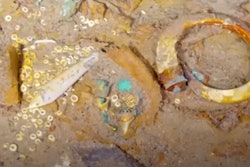
From mourning her husband's death to showing off love tokens from his hunting trips, Queen Victoria helped trigger the popularity of jewelry adorned with teeth, according to a news article published on September 10 in the British Dental Journal.
Incorporating teeth into jewelry to memorialize someone started in the Middle Ages, but memorial and milestone jewelry really caught on during the 19th century under Queen Victoria's reign. During the queen's 60-year rule over the United Kingdom of Great Britain and Ireland, it became customary to wear gold pendants, rings, and brooches made with objects intimately connected to a deceased person, such as teeth and hair, noted Rachel Bairsto, the head of museum services at the British Dental Association Museum in the U.K.
"Wearing mourning jewellery began as a simple way of keeping a loved one close by and developed into an elaborate art," Bairsto wrote.
Mourning for up to two years and going through a three-stage grieving process became an accepted practice after the death of Queen Victoria's husband and first cousin, Prince Albert. Victoria and her peers made it fashionable to wear mourning jewelry beginning one year after a loved one's death, after the first stage of grief was completed, according to the article.
For the queen, incorporating teeth into jewelry wasn't reserved for remembering someone who had died. She also had pieces created to commemorate a milestone, such as having her oldest daughter's first baby tooth included in a piece of jewelry, Bairsto noted.
Prince Albert also gifted Queen Victoria with elaborate pieces of jewelry adorned with hair, teeth, claws, and other parts of animals such as deer and boar to show his love.
"Prince Albert used to present his wife with love tokens from hunting trips," Bairsto wrote.




















